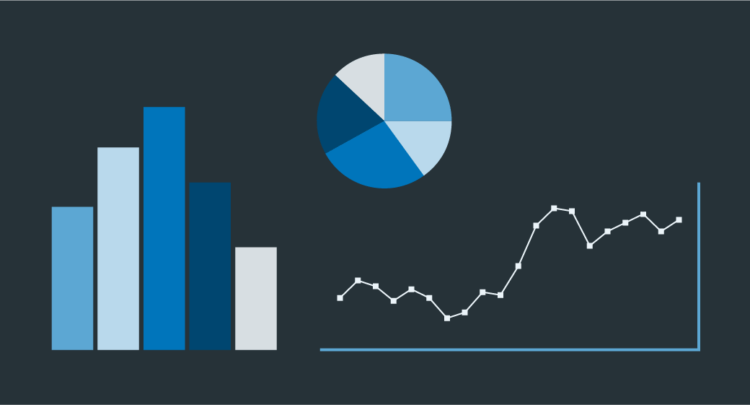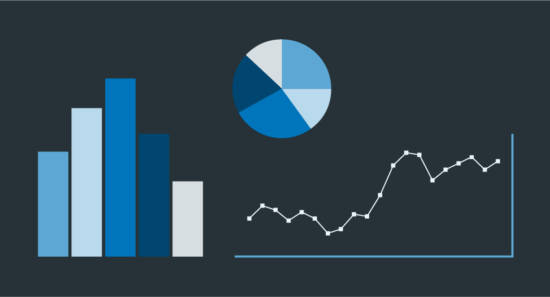What is legal analytics?
Legal analytics is the process of incorporating data into your decision making on topics affecting law firms and lawyers, like matter forecasting, legal strategy, and resource management. When used appropriately, legal analytics provides a competitive advantage by providing unparalleled transparency and insight into in-house counsel members, departments, and decision-makers.
Data in the legal sector generally falls into three categories:
- Individual data
- Internal law firm data
- Legal industry data
What’s the difference between individual and internal law firm data? Individual data is related to your existing and potential clients’ online activities on your website, which is typically sourced from places like Google Analytics, email campaigns, and cookies. Internal data comes from your law firm’s daily activities like billing rates and time tracking. Industry data comes from third-party research groups to determine legal industry trends, such as with the Legal Trends Report.
In the past, it was nearly impossible to gain any meaningful insight from the vast amounts of legal data available. But with the advent of technologies like machine learning, artificial intelligence, and language processing, lawyers now have the tools available to take data driven approaches when formulating case strategy, forecasting case outcomes, and even obtaining new clients.
Computers can work with an immense amount of information, these machines can perform tasks at unmatchable speed, saving legal professionals and departments valuable time and money.
Applications of legal analytics
Legal research
Most lawyers are no strangers to legal research and analytics. Identifying appropriate precedents or statutes could give you the edge in court. But conducting smart legal research that’s thorough and accurate can be a time-consuming process. Legal analytics tools can help you find relevant cases in every practice area without having to sort through all of them individually.
Many legal analytics and research tools pay for themselves in terms of time saved, but for some, there’s no need to pay at all. We’ve put together a list of the best free legal research tools available.
Tools to use: Casetext
E-discovery

Traditionally, preserving, collecting, reviewing, and exchanging case-related information was a long, tedious process for lawyers. With e-Discovery analytics software, exchanging electronic information between parties during litigation and investigations is a whole lot easier.
With e-Discovery legal analytics tools, instead of having to go through a large volume of documents, you can filter documents by date range or focusing on only those containing specific keywords. This eliminates the need to manually comb through documents.
Tools to use: Logikcull
Predictive analytics
With predictive legal analytics, foreseeing the future is no longer impossible for attorneys and legal leaders. From forecasting how long a case will last to the likelihood of winning, predictive analytics can help attorneys provide trends analysis, correlations, and irregularities to build a case, devise litigation strategies, and evaluate suspects.
Departments can also use predictive legal analytics in their hiring process to help them assess potential candidates and create the best team composition. Predictive data analytics can help lawyers cover all their needs—from deciding if they need external counsel, consultants, partners, or freelancers for projects.
Tools to use: Premonition, Brainspace, Lex Machina
Marketing

Legal marketing analytics can also help legal leaders to understand their ideal client, and where their practice stands compared to competitors, so they can devise a more effective marketing strategy that resonates with their target audience.
In addition, legal analytics software can analyze where your prospective clients are coming from, so you will know the best marketing channels and networking platforms to spend your marketing hours and budget on. For example, with software like Clio Grow’s legal client relationship management (CRM) platform, you can organize, nurture, and evaluate your potential new clients as well as existing ones for targeted, customized campaigns.
Tools to use: Clio Grow, Lawlytics
Business insights for law firms

By monitoring the right success metrics, you can make a major impact on your firm’s revenue and growth. You can look at key performance indicators (KPIs) related to client acquisition, like the cost of acquiring a new client, the number of new prospects by source, and the estimated average value of each new case.
Legal analytics can also help you better understand productivity KPIs like the number of billable hours, the utilization rate (which is the number of billable hours worked divided by the number of hours in the workday), and realization rate (the number of billable hours invoiced divided by the number of billable hours worked) for your firm and for each attorney.
Armed with analytics into your law firm’s performance trends, you can adopt a data driven approach to guide your decision making. For example, if you’re monitoring billable hours and find that certain months of the year tend to be slower for your firm, as those slow months are approaching, you can dedicate more time to bringing in more business to prepare for the anticipated decrease in cash flow.
Tools to use: Law Firm Insights Dashboard in Clio Manage
You may like these posts
Should my law firm use legal analytics?
It depends. If you have large volumes of data and would like to automate the analysis, legal analytics can help you save time and costs. These cost savings can ultimately get transferred to your clients. But if you’re looking to replace or outsource more specific tasks like validating if the data can support your case, we recommend still going through some cases on your own during your research process.
However, it’s important to be aware of the limitations of legal analytics. With the complexities and subjectivity (at times) of legal environments, it can be challenging to quantify and measure legal data. Most legal analytics platforms also depend on PACER (Public Access to Electronic Records), but misspelled and inaccurate information in PACER may result in attorneys making important decisions based on unreliable legal data. According to Law Technology Today, up to 60% of certain district court cases contain inaccurate information. This shows that you need to do your due diligence to verify that the data you’re using is reliable.
Conclusion: The future of legal analytics
Undoubtedly, legal analytics is an exciting and promising application that’s made a monumental impact on everything from law schools, to legal best practices, and even litigation strategy. However, as a growing area, it still has some hurdles to overcome. In spite of that, legal analytics is a field that’s changing the way legal leaders and professionals make decisions, predict litigation outcomes, and improve legal workflows.
With data analysis and visualization tools, you can make proactive and informed business decisions—like preparing for slower months. Whether you’re using legal analytics for legal research, business insights, or something else entirely, harnessing the power of legal analytics will give your firm the competitive advantage it needs to stand out in a digital world.
We published this blog post in June 2020. Last updated: .
Categorized in: Technology







